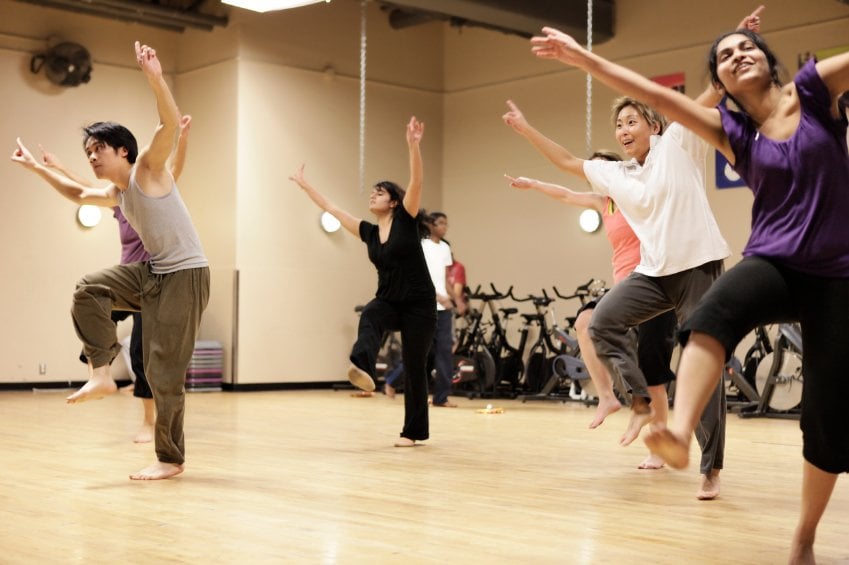
The greatest motivator isn’t on an auditorium stage or audio book. It's a force that lies within all of us. It’s the drive of self-motivation that comes from an internal propulsion system that drives us toward achievement and progress, a hidden resource that can dramatically cut stress and increase work-life balance: mastery.
Whether you are trying to improve a 10k running time, or learn an instrument or ballroom dancing or yoga, the call of self-mastery propels you to do better—or less worse than you did last time, as one aikido enthusiast told me.
BORN TO LEARN
We are designed to continuously improve our skill at pursuits we are interested in and practice them regularly for the learning and self-challenge itself, intrinsic motivations shown to increase persistence and accomplishment. Studies show that students learning a musical instrument stick with it if they are self-driven and not forced by parents or peers.
The same is true of dieters. If they are losing weight because they want to and not externally motivated by the pressure of others, they are more likely to reach their goal. Students motivated by grades, an external metric, will drop a tough class, such as physics, while those whose goal is to learn will persevere even if it means a “C” on their records.
Edward Deci and Richard Ryan at the University of Rochester have documented why intrinsic motivation and the mastery compulsion it fuels are so powerful. We all have an overriding need to determine the content of our lives. Activities that let us experience mastery help us do that, allowing us to steer a course we have designed.
Self-mastery satisfies two of the three core psychological needs Deci and Ryan identified that all humans seek to satisfy—autonomy and competence. And if we do the activities with others, we gratify the third need, relatedness, or close social connection with others. Satisfy these needs, and we are gratified in a lasting way that external goals—money, success, status—which are ephemeral, can’t approach. We don’t really buy the fickle approval of others that comes with external metrics, so they don’t stick with us. Mastery, though, is self-validating.
We can experience mastery on the job in work that we find challenging, and as we get better at our craft for its own sake, which can tap the competence need. But where we can really advance our mandate to be skillful is outside the professional world. Autonomy and competence can be best satisfied in our time off-the-clock.
MASTERY TROUCES STRESS
Besides making us feel great and touching off a dopamine dance of satisfaction when we learn and advance our abilities, mastery also happens to be one of the best stress management tools on the planet. Work recovery science, which looks at the ways bodies and minds need to recover after a day of pressure and tension on the job, places mastery activities at the top of the list of strategies that can separate us from work stress and the thoughts of work that keep us ruminating about the day's events.
Relaxation and recreation are also good work recovery options, but mastery if the most effective at cutting stress. It fires up your competence, confidence, esteem, and sense of control, in addition to the learning and progress, which make you feel you are moving forward in life no matter what is happening on the professional side.
Mastery activities also have something else going for them. They force us to pay full attention to the rules and moves of the activity. The more attention we have on what’s before us, the less stress, which lives in the other two tenses.
There is a complete cutoff of the thoughts that drive stress. We are able to completely detach ourselves psychologically from work and work thoughts, which researchers say is the key to the recovery process from the overactivation mode we have been in all day.
THE TWO KEYS TO SUSTAINABLE HAPPINESS
The only competition in self-mastery is yourself and no goal except for developing your abilities. That’s the learning process, something we used to be very good at. As kids, we jumped in without worrying if we were good at it or not, and that’s how we learned.
Anyone who has ever seen a class of first-graders waving their hands, so enthused to answer a teacher’s question that some kneel on their chairs to try make their hands go higher knows that learning is exciting. Though we lose that spirit as we get older and worry too much about what others will think, that spark of mastery is still alive and well.
We just have to put on our kid hat again and do these five things we once did without thinking about it:
• Don’t wait for an invitation
• Be eager to try something new
• You don’t need to know how
• Jump in without thinking about what anyone else thinks
• You want to try because you’ve never tried it before
Mastery activities trounce stress because they also contain the two keys to sustainable happiness. Kennon Sheldon of the University of Missouri and Sonya Lyubomirsky from the University of California Riverside have shown in their research that staying happy comes down to two proactive choices: initiating intentional activities and sustaining intentional activities.
This puts mastery pursuits squarely at the center of a happy life. Mastery activities are a work-life balance insurance policy, making sure you indulge in the things that provide purpose and fun and connect you to your real life and that you actually have one.
Research from the University of Montreal shows that if you have a passion, you can add eight hours of joy to your week. Is that something you could use?
If you would to learn more about my work-life balance and stress management employee training programs, please click the button below for details.



